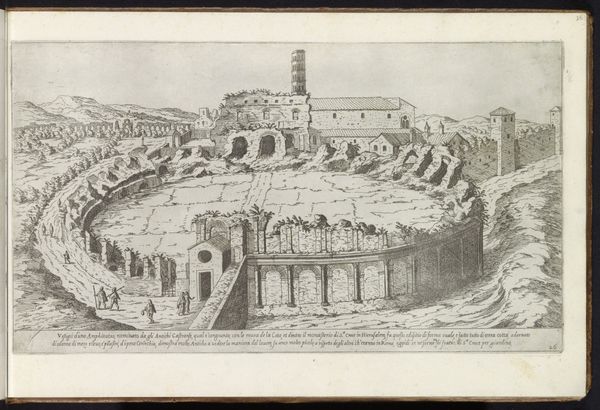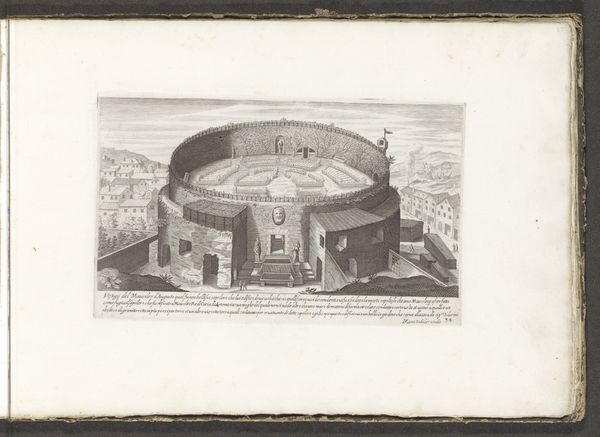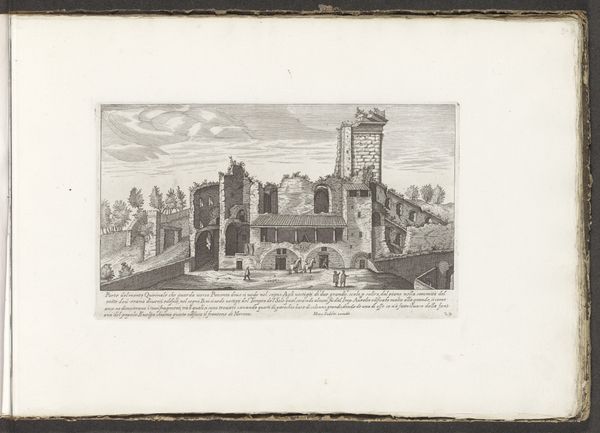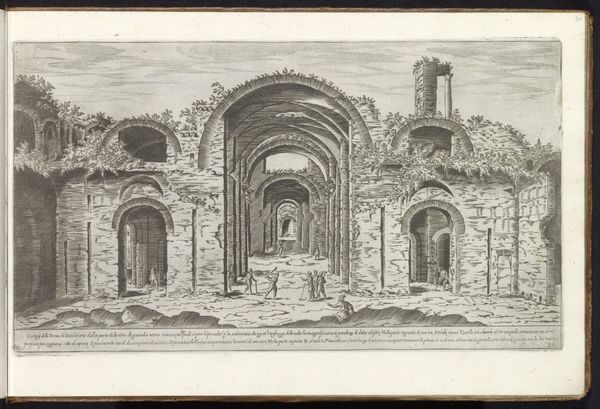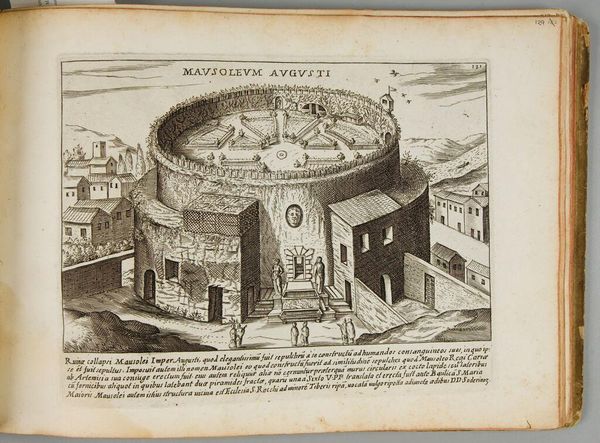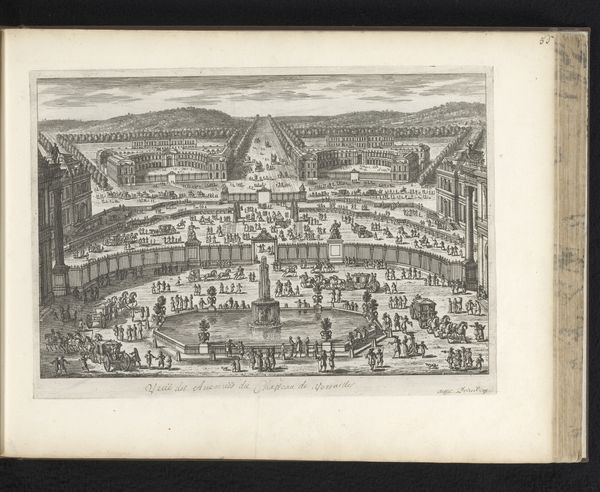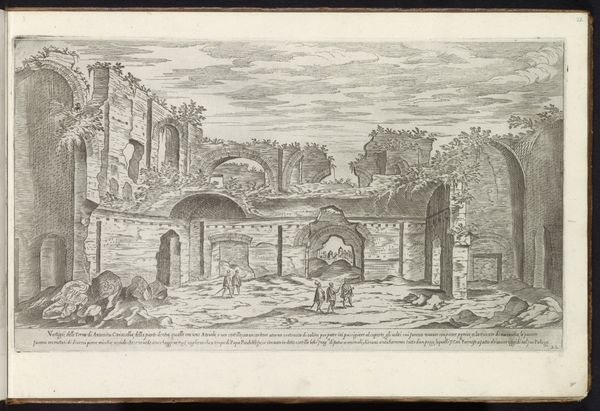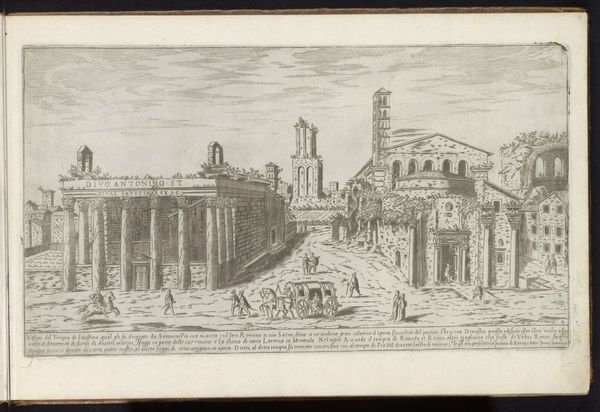
drawing, print, engraving, architecture
#
drawing
# print
#
old engraving style
#
landscape
#
11_renaissance
#
geometric
#
engraving
#
architecture
Dimensions: height 215 mm, width 381 mm
Copyright: Rijks Museum: Open Domain
This etching showing the Mausoleum van Augustus was made in Rome by Étienne Dupérac. The fine lines were achieved by incising an image onto a metal plate, likely copper, in preparation for printing. The image shows us the immense, ruined cylindrical structure, with a formal garden planted on top. Consider the labor involved in such an enormous architectural feat, requiring teams of workers to quarry, transport, and assemble massive blocks of travertine stone. The etching itself records the mausoleum’s state of decay, transformed from a symbol of imperial power into a ruin overtaken by nature. Dupérac's printmaking captures this transformation, using skilled labor to depict the effects of time and neglect on a grand monument. It prompts us to reflect on the cyclical nature of power, and the relationship between human ambition and the forces of nature, all through the careful manipulation of material and process.
Comments
No comments
Be the first to comment and join the conversation on the ultimate creative platform.
